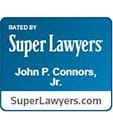When someone falls and suffers an injury on the property of someone else, they may file a premises liability claim in an attempt to get money to cover their injuries. Such claims cost property owners and insurance companies considerable money each year, even though some of the claims filed lack validity in the first place.
According to the New York State Bar Association, a plaintiff in New York must prove several things to find success in a premises liability claim. Understanding what these factors are may help property owners and insurance companies defend themselves against false claims.
Defective conditions
Whether defective conditions were present is an important factor in any slip-and-fall case. Defective or unsafe conditions might include puddles on store floors, potholes in parking lots or wires or cables in places where they create a public threat. Whether a defect is “trivial” also factors into whether a plaintiff has a valid claim.
Responsibility for defective conditions
Responsibility for a defective condition depends on a defendant’s tie to the property. Those who own, occupy, control or have “special use” rights to a particular place may be responsible for unsafe conditions.
Knowledge of the defect
To potentially find success through a personal injury claim, a plaintiff must also show that a property owner either created a defect, or was aware of its existence, but neglected to do anything about it, prior to the fall.
Expert opinions
In some cases, a plaintiff may have to enlist experts to back up a claim that a property defect caused a particular fall and injury. Building code inspectors, for example, may have to attest that a property was unfit for use based on existing building codes.






